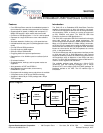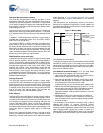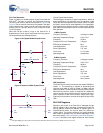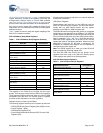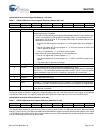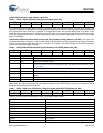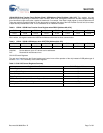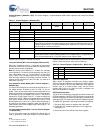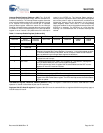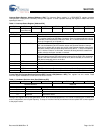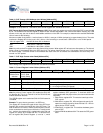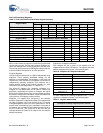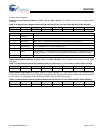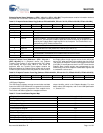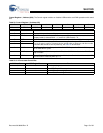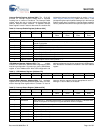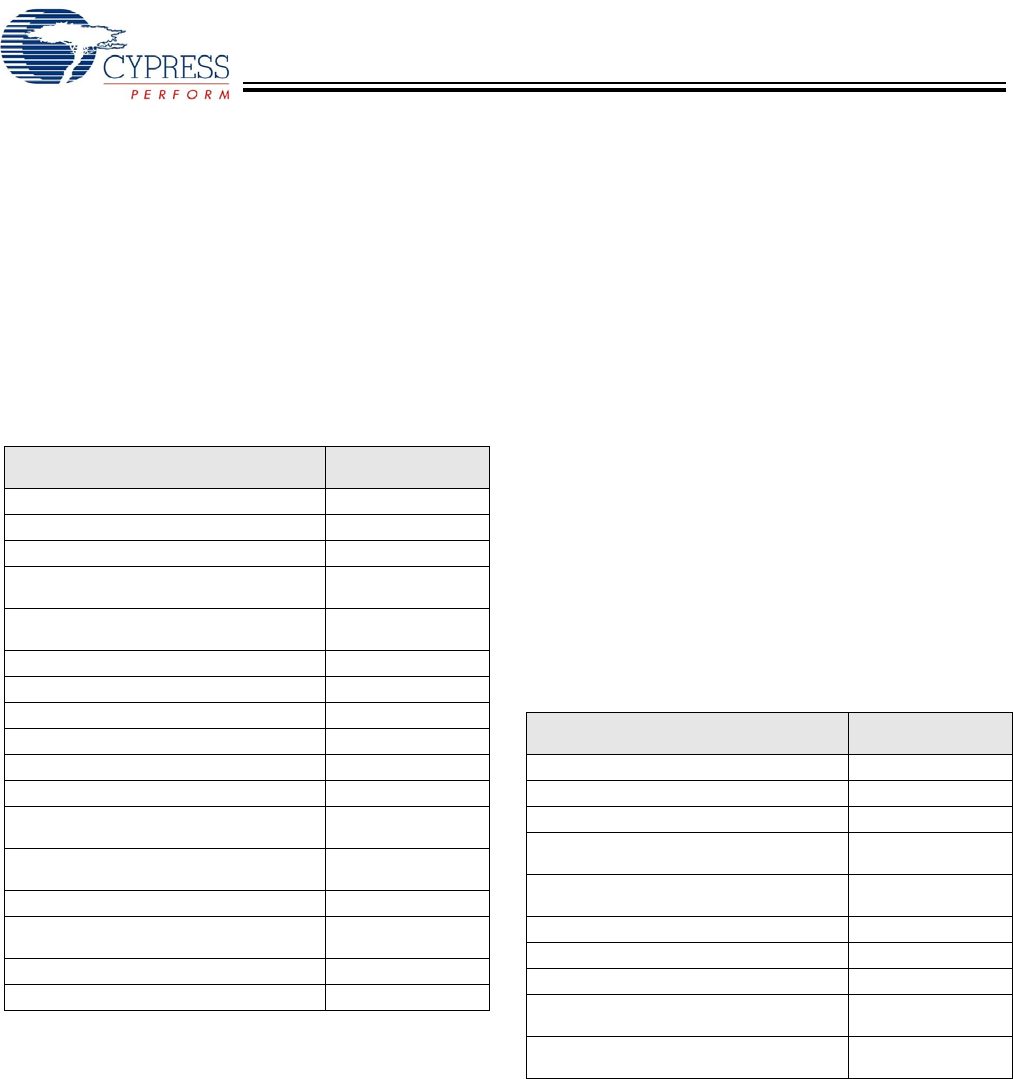
SL811HS
Document 38-08008 Rev. *D Page 4 of 32
“SL811HS Slave Mode Registers” on page 12 describes Slave
register definitions). Access to the registers are through the
microprocessor interface similar to normal RAM accesses
(see “Bus Interface Timing Requirements” on page 26) and
provide control and status information for USB transactions.
Any write to control register 0FH enables the SL811HS full
features bit. This is an internal bit of the SL811HS that enables
additional features.
Table 1 shows the memory map and register mapping of the
SL811HS in master/host mode.
SL811HS Master (Host) Mode Registers
The registers in the SL811HS are divided into two major
groups. The first group is referred to as USB Control registers.
These registers enable and provide status for control of USB
transactions and data flow. The second group of registers
provides control and status for all other operations.
Register Values on Power Up and Reset
The following registers initialize to zero on power up and reset:
• USB-A/USB-B Host Control Register [00H, 08H] bit 0 only
• Control Register 1 [05H]
• USB Address Register [07H]
• Current Data Set/Hardware Revision/SOF Counter LOW
Register [0EH]
All other register’s power up and reset in an unknown state and
firmware for initialization.
USB Control Registers
Communication and data flow on the USB bus uses the
SL811HS’ USB A-B Control registers. The SL811HS commu-
nicates with any USB Device function and any specific
endpoint via the USB-A or USB-B register sets.
The USB A-B Host Control registers are used in an overlapped
configuration to manage traffic on the USB bus. The USB Host
Control register also provides a means to interrupt an external
CPU or microcontroller when one of the USB protocol transac-
tions is completed. Tab le 1 and Table 2 show the two sets of
USB Host Control registers, the ’A’ set and ’B’ set. The two
register sets allow for overlapping operation. When one set of
parameters is being set up, the other is transferring. On
completion of a transfer to an endpoint, the next operation is
controlled by the other register set.
Note The USB-B register set is used only when SL811HS
mode is enabled by initializing register 0FH.
The SL811HS USB Host Control has two groups of five
registers each which map in the SL811HS memory space.
These registers are defined in the following tables.
SL811HS Host Control Registers.
Table 1. SL811HS Master (Host) Register Summary
Register Name
SL811HS
SL811HS
(hex) Address
USB-A Host Control Register 00h
USB-A Host Base Address 01h
USB-A Host Base Length 02h
USB-A Host PID, Device Endpoint
(Write)/USB Status (Read)
03h
USB-A Host Device Address (Write)/Transfer
Count (Read)
04h
Control Register 1 05h
Interrupt Enable Register 06h
Reserved Register Reserved
USB-B Host Control Register 08h
USB-B Host Base Address 09h
USB-B Host Base Length 0Ah
USB-B Host PID, Device Endpoint
(Write)/USB Status (Read)
0Bh
USB-B Host Device Address (Write)/Transfer
Count (Read)
0Ch
Status Register 0Dh
SOF Counter LOW (Write)/HW Revision Reg-
ister (Read)
0Eh
SOF Counter HIGH and Control Register 2 0Fh
Memory Buffer 10H-FFh
Table 2. SL811HS Host Control Registers
Register Name SL811H
SL811HS
(hex) Address
USB-A Host Control Register 00h
USB-A Host Base Address 01h
USB-A Host Base Length 02h
USB-A Host PID, Device Endpoint
(Write)/USB Status (Read)
03h
USB-A Host Device Address (Write)/Transfer
Count (Read)
04h
USB-B Host Control Register 08h
USB-B Host Base Address 09h
USB-B Host Base Length 0Ah
USB-B Host PID, Device Endpoint
(Write)/USB Status (Read)
0Bh
USB-B Host Device Address (Write)/Transfer
Count (Read)
0Ch



